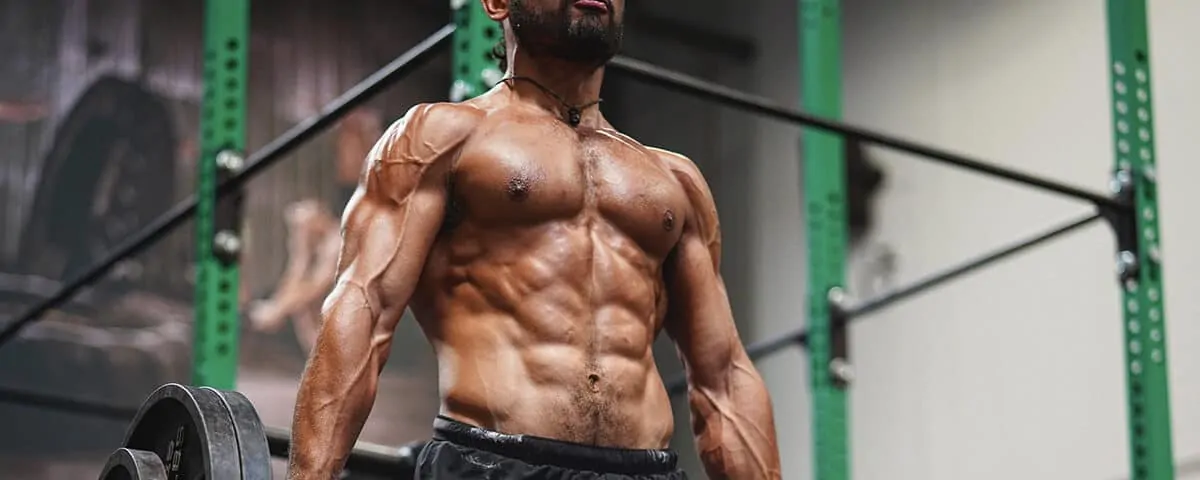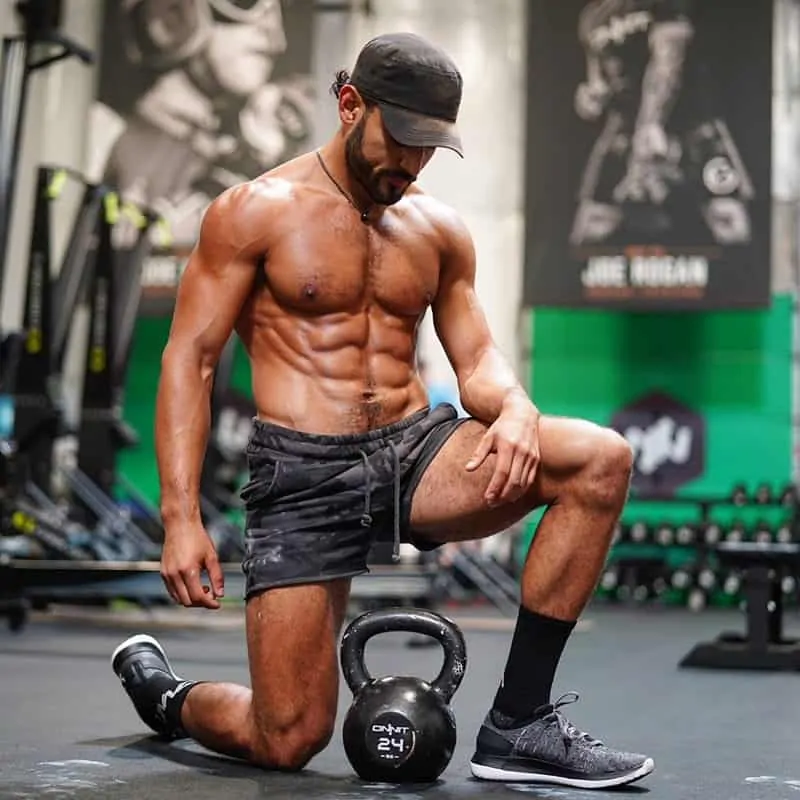
Believe it or not, one of the most popular questions I get on a regular basis is how to improve posture. Considering most of our work now requires us to be tethered to a computer and desk most of the day, it makes sense that things may be starting to, well, slouch forward.
However, even though a major downfall of bad posture is that it simply looks bad, there are many other important reasons you definitely want to improve it, both for training and health purposes. (Hint: bad posture can seriously limit your gains if it gets bad enough).
Why Posture Matters
While we usually focus on the aesthetic aspects of bad posture (makes us look less confident, unhappy, etc…) the health aspect of bad posture is not to be ignored. Slouching can lead to anything from sore, degraded joints to spinal injuries and less gains. Let’s break down how.
1. Good Posture Allows Muscles to Be Used Properly.
 The human body is designed to maintain a certain alignment in order to function properly. When it’s in this alignment, our skeletal system is supported by muscles that are properly formed in order to hold everything neatly in place. When our posture moves out of alignment – say, we start slouching our shoulders and neck forward, or our hips rock forward instead of being completely aligned beneath our spine – our muscles are forced to compensate to this “new” position.
The human body is designed to maintain a certain alignment in order to function properly. When it’s in this alignment, our skeletal system is supported by muscles that are properly formed in order to hold everything neatly in place. When our posture moves out of alignment – say, we start slouching our shoulders and neck forward, or our hips rock forward instead of being completely aligned beneath our spine – our muscles are forced to compensate to this “new” position.
When this happens, our muscles can be restricted or strained from weight or tension that they aren’t designed to support. Take, for example, your lower back muscles: when your shoulders and neck slouch forward, your lower back muscles strain and stretch forward, eventually over-lengthening and weakening due to trying to hold back your upper back and neck without success. However, if you were to sit up straight, your lower back muscles wouldn’t be under strain and would be in their proper position, where they could hold your entire trunk in place without stretching unnaturally.
2. Decreases Stress on Ligaments and Joints.
When we’re standing or sitting incorrect posture, our skeletal system and muscles are aligned in a way that keeps excess weight and stress off of our ligaments and joints. When we’re slouching or rounding our shoulders, or even walking with our hips out of alignment, we can put excess stress and friction on our joints, leading to pain and inflammation.
An example of this can be seen with walking and jogging: if your hips are not aligned correctly (say, if they’re slightly forward or thrust backward from overarching your spine) this can cause a misalignment of your hip joints, which further knocks your knee joints out of alignment. Even if you don’t feel this right away as you’re walking day-to-day, the friction on your ligaments and joints from walking and/or jogging will start to take its toll and eventually cause pain. If you feel any type of pain or creaking or soreness in your knees or ankles when walking, running, or training, you may want to look at your posture instead of simply taking anti-inflammatories.
3. Prevents Muscle Pain, Back Pain, and Injuries.
As you can see, repeatedly moving around or training when you’re out of alignment due to bad posture can take a serious toll on your muscles and joints. It can also eventually lead to a pinched nerve (a common cause of that shooting back pain some people experience) due to a joint, muscle, or bone out of alignment that ends up pressing too hard on a nearby nerve. You can also experience strains or spinal injuries like disk slips when training with bad posture, since moving with weight when your spine is out of alignment can put a lot of pressure on the wrong areas of your skeletal system.
4. Boosts Confidence.
Interestingly, improving your posture not only gives you a confidence boost by improving how you look, but just the act of standing up straight and tall can stimulate hormones in your body that boost mood and feelings of victory, like testosterone. [*] Ever heard of the term “posturing”? Well, just adjusting your posture to the way you want to feel can trick your mind into actually feeling that.
5. Helps Improve Muscle Stamina.
You may not even notice this if you’ve had bad posture for a while, but it can actually decrease your muscle stamina. This is because a misaligned skeletal system can stretch and/or restrict your muscles in a way that doesn’t allow them to move through their full range of motion, or doesn’t allow them to strengthen fully. When your muscles can’t be used to their full strength, or are unable to develop fully due to being blocked (or even having circulation to them cut off so they don’t get necessary oxygen or nutrients) they can fatigue quicker during training.
Grab yourself a pair of kettlebells and find a pull-up bar to follow along with these 5 moves that will cause noticeable improvements in your posture in just one week. Aim for completing these at least 4 times a week for best results.
You can also check out the individual exercises here to make sure you’re maintaining proper form:
1. Double Kettlebell Row to Deadlift
This exercise works your entire posterior chain – the group of muscles along your back responsible for holding your spine in correct alignment.
1. Start with feet hip-width apart, one kettlebell on each side. Slightly bend your knees, keeping your back flat, and grip one in each hand.
2. Push through your glutes and heels to come to standing. Now, rotate your wrists outward to roll your shoulders back.
3. Lower back down, keeping your back flat again, then row the kettlebells before they hit the floor, squeezing your shoulder blades together.
4. Deadlift the kettlebells again and repeat.
2. Double Kettlebell Farmers Carry
This exercise trains your body to maintain strict alignment with weight so that when you don’t have weight, it will naturally and easily carry the correct posture.
1. Begin with two kettlebells, one in each hand, palm facing forward.
2. Stand up straight, shoulders back and down (don’t hunch them toward your ears trying to compensate for the weight) and align your hips with your chest and neck, slightly tucking in your hips. Avoid over-arching your lower back.
3. Begin walking slowly, focusing on setting your heel down first, then rolling all the way to your toes before you take another step.
4. Continue walking for 1-2 minutes.
3. Scapula Pull-Ups
Scapula pull-ups focus on strengthening your scapula, which helps pull your shoulders back and down into correct alignment.
1. Begin by hanging in pull up position.
2. Now, instead of pulling up and bending your elbows like normal, focus on pulling your shoulder blades down to lift yourself up, creating space between your neck and shoulders.
4. Bodyweight Spine Rolls
Spine rolls help loosen the muscles of your posterior chain, which can become tight and pinched into place. This is a great warm-up and cool down to do before and after the rest of these exercises.
1. Begin by standing tall, feet hip-width apart. Now, roll your head forward, followed by your shoulders and torso, until you’re folded down over your toes with your knees slightly bent.
2. Reverse the roll in the opposite direction, from torso to shoulders to neck, then stretch back with your hands by your sides.
5. Periscope Bodyweight Exercise
This exercise is excellent for strengthening the muscles in your back that help keep your shoulder and neck from pulling forward. Rotating your neck during this one also keeps your neck flexible to avoid pinching and tension.
1. Begin by laying face down on your floor or mat.
2. With your feet propped on your toes and legs hip-width apart, bring your hands under the sides of your chest and push your upper body off the floor, using your back and glutes. Lift your neck simultaneously as you lift your hands off the floor.
3. As you’re holding this position, look left, right, slightly upward, and downward to stretch out and loosen your neck.
5 Moves for Better Posture
Luckily, with a few simple moves, you can usually train your muscles to move your skeletal system back into place and keep it there.
For more videos like this be sure and subscribe to my YouTube Channel!
